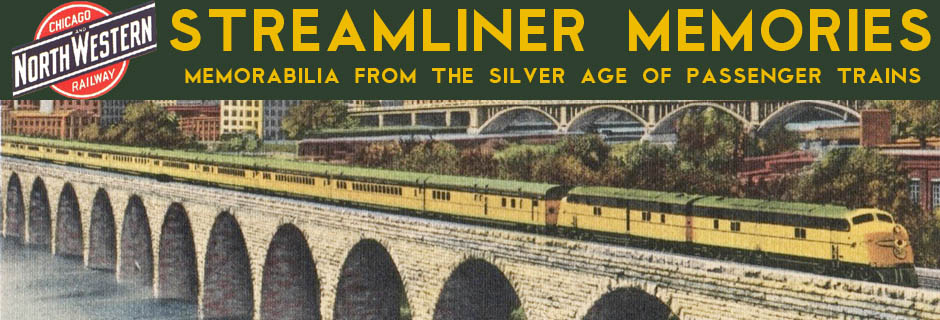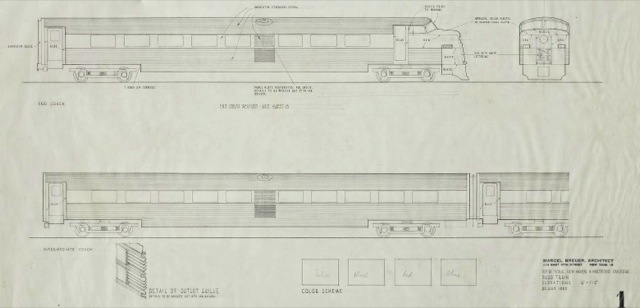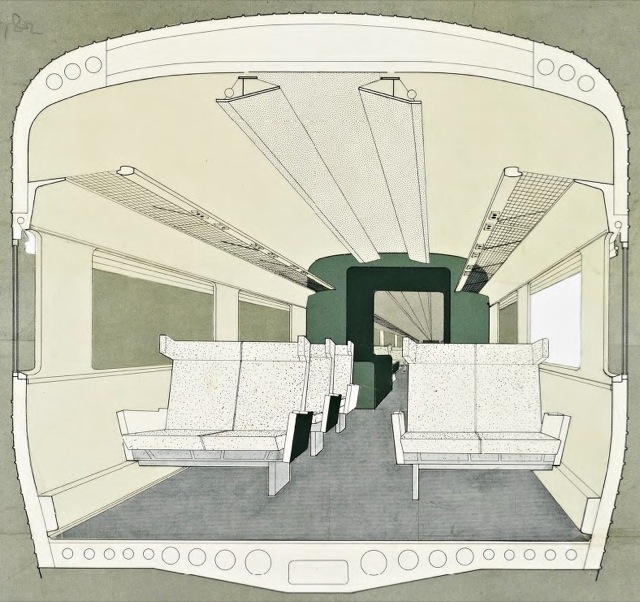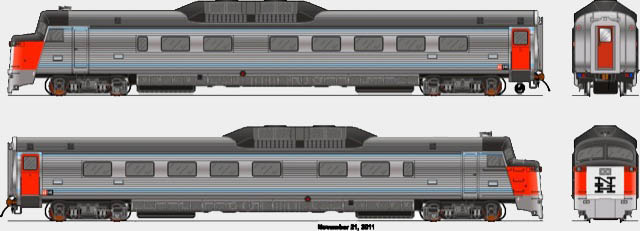The last of Patrick McGinnis’ three trains was the Roger Williams, which entered service between Boston and Washington on April 28, 1957. Budd built the train by modifying its RDCs into a six-car train that had controls only in the first and last cars.
It seems to be easier to find photos of the Roger Williams as it lasted longer in service on the New Haven. This photo was taken, probably in 1957 or 1958, at the New Haven, Connecticut train station. Click image for a larger view.
The first and last cars also had a faring to make them appear streamlined. As a concession to the fad for trains with a low center of gravity, Budd lowered the floor of the Roger Williams by seven inches below that of a standard RDC. To allow the trains to reach 110 mph, each car had two 300-hp engines instead of the 275-hp engines that came in other RDCs.
Marcel Breuer’s design for the Roger Williams imagined away the ventilator humps that characterize RDCs and unimaginatively placed a bulldog General Motors F-unit nose on the front. Budd kept the ventilators and installed a very crude imitation of that bulldog nose. Click image for a larger view.
Like the other New Haven trains, the Roger Williams had a third-rail pickup so it could be powered by electricity, rather than its Diesel engines, when it entered Grand Central Terminal. The third-rail operations never worked very well, so–like the John Quincy Adams and Dan’l Webster, the Roger Williams lasted in this service less than two years.
Marcel Breuer’s design for the interiors of the train seems rather spartan. In fact, his archives show he designed everything from lighting to cup holders. Click image for a larger view.
Unlike the other two trains, the New Haven kept this one for many more years, breaking the train into two three-car trains and running them between Boston and Providence–a route that didn’t require the use of a third rail. The two trains continued into the Amtrak era and were not retired until 1980. The two cars with cab controls and one of the middle cars still exist in New Hampshire where a private owner has restored them to operable condition.
Here’s a Roger Williams control car showing the semi-bulldog nose. This drawing was done by an Autocad user named Will Anderson, whose incredibly detailed drawings of hundreds of locomotives built in the last 60 or so years include the Aerotrain LWT-12, Santa Fe warbonnets, and various California Zephyr locomotives. Click image for a larger view.




